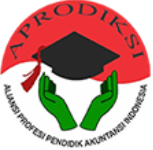Office Communication Competencies for Vocational High School in Industri 4.0
(1) Universitas Negeri Yogyakarta
(2) Universitas Negeri Yogyakarta
(3) Universitas Negeri Yogyakarta
(4) Universitas Negeri Yogyakarta
Abstract
This study aims to explore the information about industry needs for office communication competence in the 4.0 industrial revolution era. Competency suitability is one of the things supporting objective achievement of vocational education implementation. The development of office communication competencies also needs to be scrutinized and adjusted so that students can learn both at school and industry. This research is a case study research conducted using a descriptive method with qualitative approach and analyzed using the Miles & Hubberman model which includes stages of data reduction, data presentation, data verification, and data inference. The results of this study indicate that office communication competencies explicitly contained in the 2013 revised edition of the 2017 curriculum are still relevant to be taught in schools and are still needed in the industry. Several competencies need to be updated and added to support students' skills in dealing with the development of work in the industry related to office communications in the 4.0 industrial revolution era to improve the office work effectiveness, such as (1) information management using social media, web, and online application of goods or services sales; (2) mastery of communication using social media, the web, and online application of goods or services sales; and (3) mastery of international languages.
Keywords
Full Text:
PDFReferences
Ambiyar, Yulastri, A., Yupelmi, M., & Paryono. (2018). Relevance of the Productive Course of Hair Beauty in Vocational High Schools to Industry Needs. Jurnal Pendidikan Teknologi Dan Kejuruan, 24(1), 125–131. https://doi.org/10.21831/jptk.v24i1.18388
Ardilla, N. D., & Pramusinto, H. (2015). Pengaruh Kepemimpinan, Komunikasi Internal, dan Motivasi Kerja terhadap Kinerja Pegawai BP3AKB Provinsi Jawa Tengah. Jurnal Pendidikan Ekonomi Dinamika Pendidikan, X(1), 53–66.
Assegaf, D. (1982). Jurnalistik masa kini. Jakarta: Ghalia Indonesia.
Clark, & Winch. (2007). Vocational Education: International Approaches, Developments, and Systems. London: Routledge.
Eriansyah. (2015). Praktik Media Relations Humas Pemerintah Tanjung Jabung Barat. Jurnal Komunikasi, 9(2), 233.
Gaol, C. J. L. (2008). Sistem Informasi Manajemen. Jakarta: Grasindo.
Gibson, J. L., Ivancevich, J. M., & Jr., J. H. D. (2000). Organizations: Behaviour, structure, and process. Boston: McGraw Hill Companies. Inc.
Gunadi, Usman, T., & Nugraha, B. S. (2014). Identifikasi Kompetensi SMK Program Studi Otomotif dalam Rangka Implementasi Kebijakan Kurikulum 2013. Jurnal Pendidikan Teknologi Dan Kejuruan, 22(2), 155–162.
Hasanudin, M., Budiyono, I., & Asrori, M. (2019). Model Development of Accounting Internship Efforts in Dealing Industrial Revolution 4.0. Dinamika Pendidikan, 14(2), 155–167. https://doi.org/10.15294/dp.v14i2.22758
Hermanto, F. Y., Sutirman, Hidayati, B., & Sholikah, M. (2019). The Need of Practical Teaching in Vocational High School of Automation and Office Management Program in Yogyakarta City. Jurnal Pendidikan Vokasi, 3(3).
Jatmoko, D. (2013). Relevansi kurikulum SMK kompetensi keahlian teknik kendaraan ringan terhadap kebutuhan dunia industri di Kabupaten Sleman. Jurnal Pendidikan Vokasi, 3(1), 1–13. https://doi.org/10.21831/jpv.v3i1.1572
Judisseno, R. K. (2008). Jadilah Pribadi yang Kompeten di Tempat Keja. Jakarta: PT. Gramedia Pustaka Utama.
Margunani, & Nila, A. (2012). Pengaruh Praktik Kerja Industri dan Penugasan Mata Diklat terhadap Kesiapan Kerja Siswa SMK di Kabupaten Kendal. Jurnal Pendidikan Ekonomi Dinamika Pendidikan, VII(1), 1–7.
Miles, M. B., & Hubberman, A. M. (1994). Qualitative Data Analysis. California: SAGE Publications.
Moekijat. (1993). Teori komunikasi. Bandung: Mandar Maju.
Narwoto, & Soeharto. (2013). Faktor-faktor yang Berpengaruh terhadap Prestasi Belajar Teori Kejuruan. Jurnal Pendidikan Vokasi, 3(2), 222–233.
Novia, J. (2013). Efektivitas Media Komunikasi Internal SMAK Kolese Santo Yusup. Jurnal E-Komunikasi, 1(1), 1–10.
Prahalad, C. K., & Hamel, G. (2009). The Core Competence of The Corporation. Knowledge and Strategy, 41–60. https://doi.org/https://doi.org/10.1016/b978-0-7506-7223-8.50003-4
Slamet PH. (2011). Peran Pendidikan Vokasi dalam Pembangunan Ekonomi. Cakrawala Pendidikan, Th.XXX(2), 189–203.
Spencer, L., & Spencer, S. (1993). Competence at Work. Canada: John Wiley & Son.
Suranto Aw. (2018). Komunikasi Organisasi. Bandung: PT. Remaja Rosda Karya.
Suroto, & Hung, N. T. (2018). Management of an Industry Standard Class. Jurnal Pendidikan Teknologi Dan Kejuruan, 24(1), 46–51. https://doi.org/10.21831/jptk.v24i1.14710
Sutirman, Muhyadi, & Surjono, H. D. (2017). Problems in Learning of Electronic Filing at Vocational School in Yogyakarta Special Region, Indonesia. Journal of Education and Practice, 8(5), 94–99. Retrieved from www.iiste.org
Taprial, V., & Kanwar, P. (2012). Understanding social media. London: Ventus Publishing Aps.
Triwidisari, A., Nurkhin, A., & Muhsin. (2017). The Relationships Between Instagram Social Media Usage, Hedonic Shopping Motives, and Financial Literacy on Impulse Buying. Dinamika Pendidikan, 12(2), 170–181. https://doi.org/10.15294/dp.v12i2.13565
Wibowo, N. (2016). Upaya Memperkecil Kesenjangan Kompetensi Lulusan Sekolah Menengah Kejuruan dengan Tuntutan Dunia Industri. Jurnal Pendidikan Tekonologi Dan Kejuruan, 23(1), 45–50.
Widiyanto. (2010). Strategi Pengembangan Kurikulum berbasis Kompetensi DUDI untuk SMK. Jurnal Pendidikan Ekonomi Dinamika Pendidikan, V(2), 103–116.
Wollschlaeger, M., Sauter, T., & Jasperneite, J. (2017). The Future of Industrial Communication: Automation Networks in the Era of the Internet of Things and Industry 4.0. Institute of Electrical and Electronics Engineers (IEEE), 11(1), 17–27. https://doi.org/10.1109/MIE.2017.2649104
Yoto, & Widiyanti. (2017). Vocational High School Cooperation with P.T. Astra Honda Motor to Prepare Skilled Labor in Industries. International Journal of Environmental & Science Education, 12(3), 585–596. https://doi.org/10.12973/ijese.2017.1249p
Refbacks
- There are currently no refbacks.

This work is licensed under a Creative Commons Attribution 4.0 International License.

.png)

.png)





